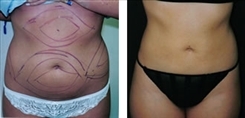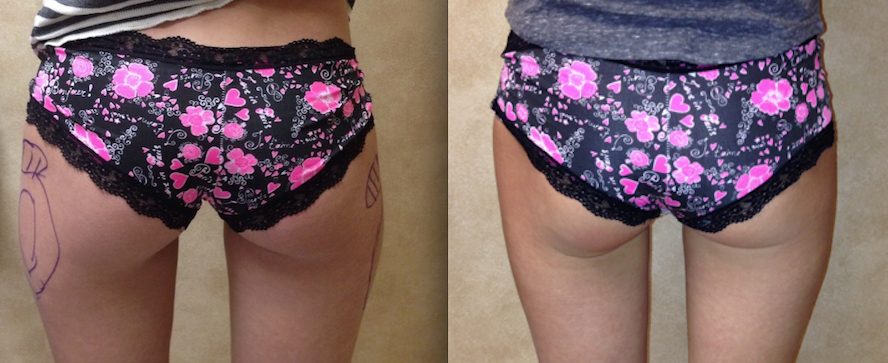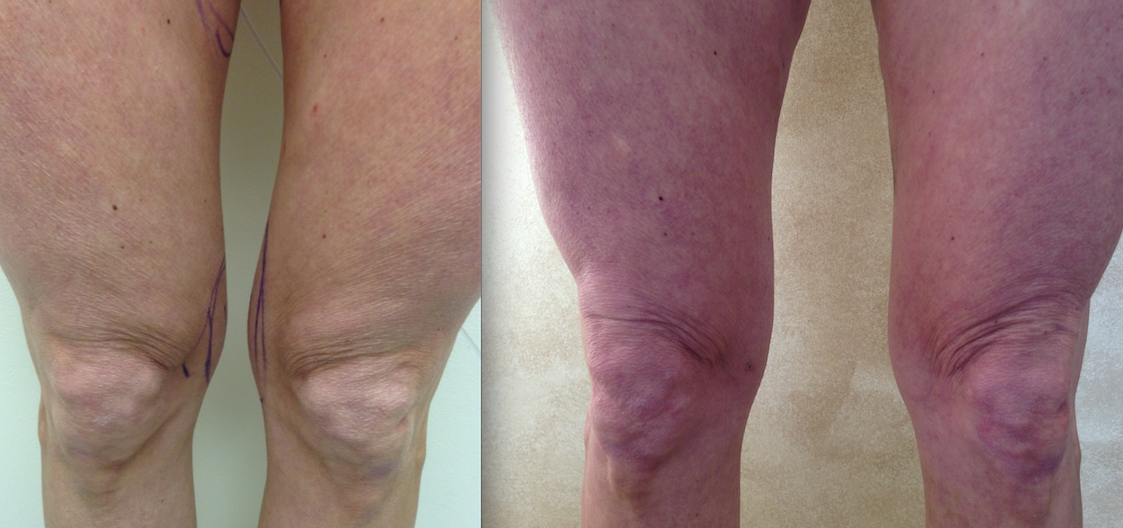Typical Liposuction Regions
Posted On: March 07, 2019 Author: The Office of Dr. Stuart Linder Posted In: Home, Liposuction
Patients present for liposuction daily in my Beverly Hills practice. There are generally localized areas that are considerable favorable, including periumbilical, lower abdomen, iliac crest roll, hips, flanks, lateral breast, medial and lateral thighs. There are also typical areas, which include the knees and arms as well as anteromedial thigh fat pads. The difficulty in these regions can be associated with skin laxity in which liposuctioning aggressively can increase contour deformities and skin contour irregularity. For example, liposuctioning of the brachial region or arms, can lead to lumpy contour deformities due to the fat being more globular and less compact or dense. This is a typical area to maintain a predictable result and therefore should be only performed by skilled board-certified plastic surgeons who are well experienced. Liposuctioning of the medial lateral knees can be difficult as the fat can be more dense and thick and there are structures that must be avoided. Liposuction of the calves or ankles can be extraordinarily difficult as the fat is quite thin and compact and it is vital not to risk injury to nerves or blood vessels in these regions. The anteromedial thigh fat is a favorable are in some patient; however, skin laxity preoperatively can increase contour deformity associated with increased skin drag. The fat of the anteromedial thigh is quite different than the lateral thigh in which there is more favorable suctioning of the outer thigh saddlebag areas due to the compact fat which smooths out nicely. The anteromedial thigh fat, however, can have increased contour lumpiness and deformity if liposuctioning is close to the skin or over-zealous surgery is performed. Only experienced board-certified plastic and reconstructive surgeons should perform liposuction in these remote, difficult and often fibrotic regions.
For example, liposuctioning of the brachial region or arms, can lead to lumpy contour deformities due to the fat being more globular and less compact or dense. This is a typical area to maintain a predictable result and therefore should be only performed by skilled board-certified plastic surgeons who are well experienced. Liposuctioning of the medial lateral knees can be difficult as the fat can be more dense and thick and there are structures that must be avoided. Liposuction of the calves or ankles can be extraordinarily difficult as the fat is quite thin and compact and it is vital not to risk injury to nerves or blood vessels in these regions. The anteromedial thigh fat is a favorable are in some patient; however, skin laxity preoperatively can increase contour deformity associated with increased skin drag. The fat of the anteromedial thigh is quite different than the lateral thigh in which there is more favorable suctioning of the outer thigh saddlebag areas due to the compact fat which smooths out nicely. The anteromedial thigh fat, however, can have increased contour lumpiness and deformity if liposuctioning is close to the skin or over-zealous surgery is performed. Only experienced board-certified plastic and reconstructive surgeons should perform liposuction in these remote, difficult and often fibrotic regions.
Case Study #1: Bra Bulge Liposuction
This is a special procedure that Dr. Linder performs in which he performs bi-directional lipectomy or liposuction of the bra bulge. This is fat that extends along the lateral pectoralis major muscle, wrapping around it. This fat can be very significant and can cause discomfort, pain and difficulty for women bring their arms down to their sides. It also can be a cosmetic frustration in which wearing brassieres can be difficult or bikinis in which the thick amount of bra fat causes embarrassment to patients. Using a bi-directional liposuction with a small incision made in the anterior axillary line just lateral to the pectoralis major border, using tumescent technique liposuction, this fat can be removed with as triple lumen Mercedes cannula and sculpted.
Six weeks of compression will allow for nice skin tightening on the majority of patients. The patients should be examined preoperatively with the arms up, to the side and straight down, in order to determine the amount of skin laxity. The bra bulge lipectomy procedure is useful for women who have significant amounts of lateral breast hypertrophy and bra bulge fat.
Please see the below example of the before/after patient who underwent the braw bulge lipectomy procedure.

Case Study #2: Saddlebag Liposculpture
The case example below shows an excellent example of a patient who is in excellent shape; however, has localized fat deposits in the saddlebag distribution of the lateral thighs. She is 23 years of age, works out regularly, has an excellent diet; however, has lipodystrophy adiposity of the saddlebags and will do great with a straight liposculpture using micro liposculpture with a 2.3 mm cannula, 1 atmosphere of vacuum suction pressure, using the tumescent liposuction technique.
The patient is now four weeks postoperative. Notice the smoothing out of the lateral thighs, left greater than right. There is significant reduction in the saddlebag and the lipodystrophy; expect to have either further reduction over the next six to eight weeks. Liposuction of these areas in thin women should be done very carefully, only in the localized deep fat deposit areas, not close to the subdermis. It is important to have at least six to eight weeks of postoperative compressive garments such as girdles that were worn by this patient. Liposculpturing requires skill and should be performed by board-certified plastic surgeons only. Sculpting these areas in thin women requires finesse and care to prevent contour deformities and irregularities.

Case Study #3: Knob Knee Liposculpture
Dr. Linder’s procedure of the knob knee liposculpturing is the newest innovation with sculpturing of the medial knee fat pad, suctioning the fat along the medial knee area. He uses a small incision with a small 2 mm blunt tip cannula to 1 atmosphere of vacuum suction pressure to liposculpt the medial knee area. This can be done under local IV sedation if done alone or it can be under general anesthesia combined with other areas, including the medial and lateral thighs, hips, and abdomen.
Medial knee liposuction requires finesse and very smooth liposculpturing of the localized deep fat deposits of the medial knee fat pad. This should be performed only by board-certified plastic and reconstructive surgeons who understand the anatomy of the difficult area.
The example shows a before and after of a patient one month post-operative from a medial knee procedure. The knob knee has been reduced by suctioning with a small cannula under tumescent technique. Notice a reduction of the fat herniation of the medial knee areas and a smoothing out of fat.

To schedule your consultation with Dr. Linder and learn more about liposuction, call our office at (310) 275-4513 in Beverly Hills or fill out our online contact form today.